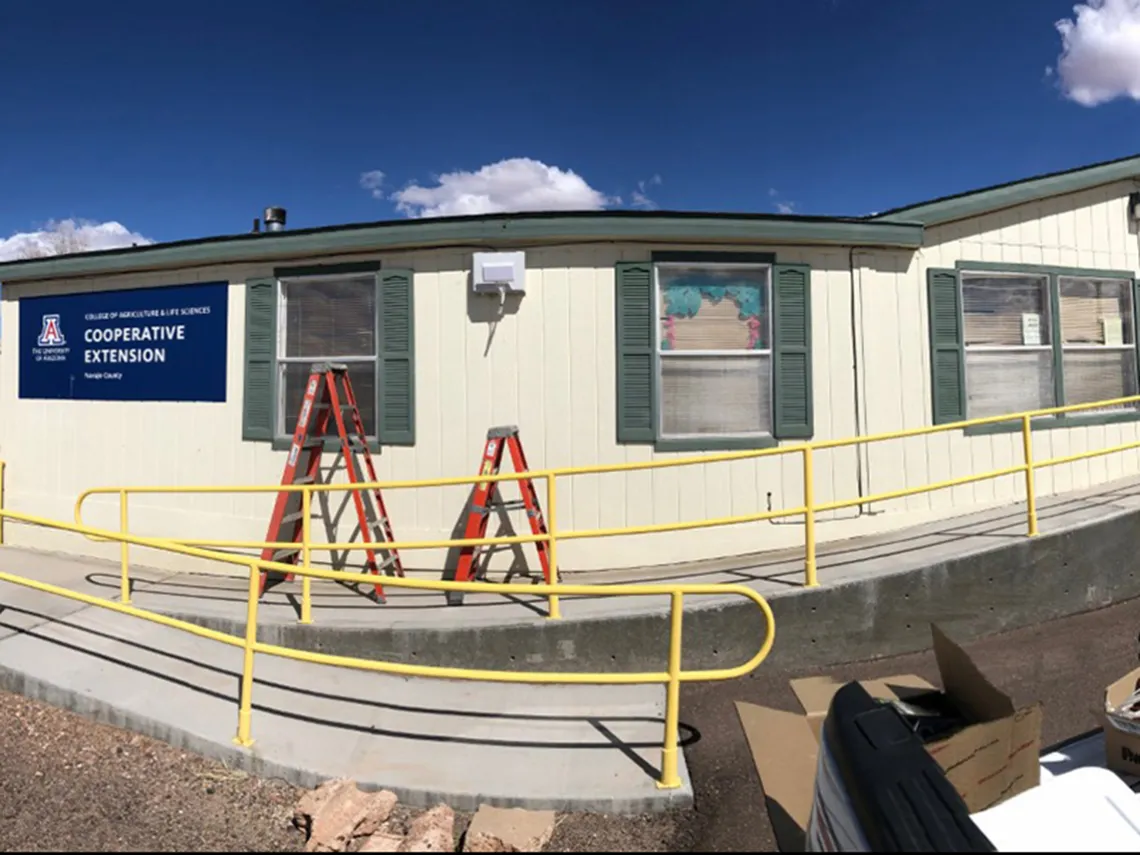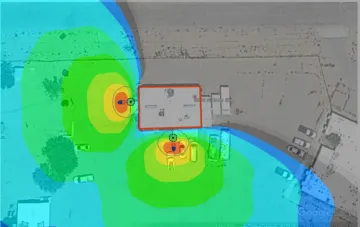Keeping Students Connected, with UAWiFi

Matt Rahr began fielding calls from faculty in March: "I'm hearing from our students that they can't get online," the callers told him.
Students had learned on March 13 that they would be finishing the semester remotely, but some didn't have the internet connection they needed. As director for Cyber and Information Technologies for the College of Agriculture and Life Sciences and Cooperative Extension, Rahr needed to find internet access in rural counties.
As part of the University's land-grant mission, programs like Cooperative Extension, CALS and the College of Education connect with communities from counties and tribal lands across the state. But in many rural areas, broadband internet and cellular service can be hard to find. Even in urban areas, economically disadvantaged families or areas can lack access.
Connecting the Resources
Rahr had half the solution to the problem. Cooperative Extension has offices in every Arizona county. These sites were potentially available for creating Wi-Fi hot spots for students to use. By parking in nearby lots, students could access Wi-Fi from their cars, ensuring social distancing.
The other half of the solution was getting network expertise to set up the hot spots.
Rahr contacted leaders at University Information Technology Services, who had also been hearing about student connectivity needs from the tribal relations team in the Government and Community Relations office, Student Success & Retention Innovation, the 24/7 Support Center and other student support services.
The Digital Divide
Derek Masseth has been working on issues of internet connectivity with partners around the state for years. In addition to being the University's chief technology officer, he's also the executive director of the Sun Corridor Network, Arizona's 100Gbps education and research network. While there's broadband connectivity along the Tucson-Phoenix-Flagstaff corridor, rural Arizona is not as connected.
Masseth is well-versed in these internet "deserts."
"The digital divide continues to widen between the metropolitan haves and the rural have-nots. It's a particular challenge for Western states, where populations are more dispersed and geographies are more complex. Our rural students often visited McDonald's to use internet when they were at home. But with COVID-19, even McDonald's was closed," he said.
Masseth pointed to CALS as a natural partner in the effort to extend University networks across the state.
Making It Happen
Lanita Collette, deputy chief information officer, previously worked at Northern Arizona University, and through her relationships there learned that NAU leaders had the same concerns for their students. She and NAU's chief information officer, Steve Burrell, agreed to collaborate. This doubled each institution's ability to create access in the southern and northern regions of the state.
Dragana Vasic, director of infrastructure and operational technologies for UITS, "leapt into action," by Collette's description. She organized members of several teams she oversees, including telecommunications services, estimating and engineering, network technicians and warehouse, and network operations. They coordinated with the Cooperative Extension staff, office landlords, internet service providers and NAU colleagues to implement the hot spots.
To be strategic about choosing locations for hot spots, the project team used a map that compared broadband availability with Cooperative Extension office and student locations by ZIP code or census tract.
Wherever possible, the project team members chose the solution that could be implemented most quickly. Some examples are:
- They pulled available equipment off the shelf in the UITS warehouse instead of trying to order new hardware while supply chains were disrupted.
- They created parking lot hot spots by running extension cables from existing Wi-Fi to new access points near windows, or on roofs.
- With on-the-ground testing, they discovered that hot spots were already available in some areas. For example, at the University's Yuma Academic Center, the large front windows have always allowed Wi-Fi to reach the parking lot.
As part of the collaboration with NAU, all the hot spots provide connection to the UAWiFi, eduroam and UAGuest networks. This allows students from the University of Arizona, NAU and other educational institutions, plus members of the community, to access the internet. UITS shipped equipment to NAU technicians, who drove out to the northern Cooperative Extension sites to install it.
Not every Cooperative Extension office had a connection to University of Arizona networks, or enough bandwidth. Rahr, UITS Telecommunications Services and the Sun Corridor Network reached out to their internet service provider contacts to increase bandwidth where possible. UITS wireless network specialists pre-configured access points that would connect to a University on-campus wireless controller when they were set up.
"It was March and we needed to get access up right away. Jobs that would usually take weeks or months. we were getting done in days," Rahr said.
Masseth said that, in some cases, team members applied "chewing gum and baling wire" ingenuity to get hot spots up and running. "We collected MacGyvers and they MacGyvered solutions. The technicians who got these sites up, they're my heroes, every day."
Hot Spots Delivering
In all, 13 sites outside of Pima County are now listed on the remote UAWiFi hot spots webpage, nine of which were updated sites.
"We got tremendous positive feedback from the community when we announced WiFi availability. People were sharing the news on social media," said Don Alamban, director of the La Paz County/Colorado River Indian Tribes extension office in Parke.
The hot spot at the Navajo County – Hopi Tribe extension office in Kykotsmovi Village got plenty of use, from both University students and the community.
"Since we put up the hot spot outside my office, I saw more cars parked outside the building. My program is the only full-time occupant in the building, so it was easy to recognize the increased traffic," said Susan Sekaquaptewa, assistant agent in the Navajo County office.
In the future, Masseth hopes that some of the quick fixes that got the hot spots up and running can replaced with long-term solutiuons.]
"Let's learn from the COVID-19 crisis that the digital divide is real and widening," he said. "Let's make sure we know what these communities need and work to deliver that."
Published on Lo Que Pasa: With MacGyver ingenuity, campus IT teams install Wi-Fi hot spots across the state
--
A UITS team effort:
UITS Leadership: Lanita Collette, Deputy Chief Information Officer and Chief Information Security Officer, and Derek Masseth, Chief Technology Officer and Sun Corridor Network Executive Director
Infrastructure & Operations: Dragana Vasic, David Lane, Rhonda Royse
Network Operations: Ken Boynton, Aaron Finocchiaro, Chris Gery, Dustin Mouton, Rob Placencia
Telecommunications Services: David Gerlach, Bob Gatterer, Mary Jordison, Patrick Walters
Estimating & Engineering: Vinnie Capuano, Randy Cuthbertson, Ruben Perez, Kent Ridgway, Mark Roberts
Technicians & Warehouse: Karen Egertson, Gene Timmons, Marcel Bechamp, Jose Bustamante, Ian Casanova, Fermin Garcia, Sergio Madrid, Dominic Michalsky, Freddy Perez, Guillermo Robinson, Jorge Romero, Michael Urquidez
Sun Corridor Network: Gabe Lopez
Communications & Marketing: Lisa Stage

Heat-map used in planning to simulate internet access available outside the La Paz County Cooperative Extension office after the installation of additional wireless access points. Photo credit: UITS.

